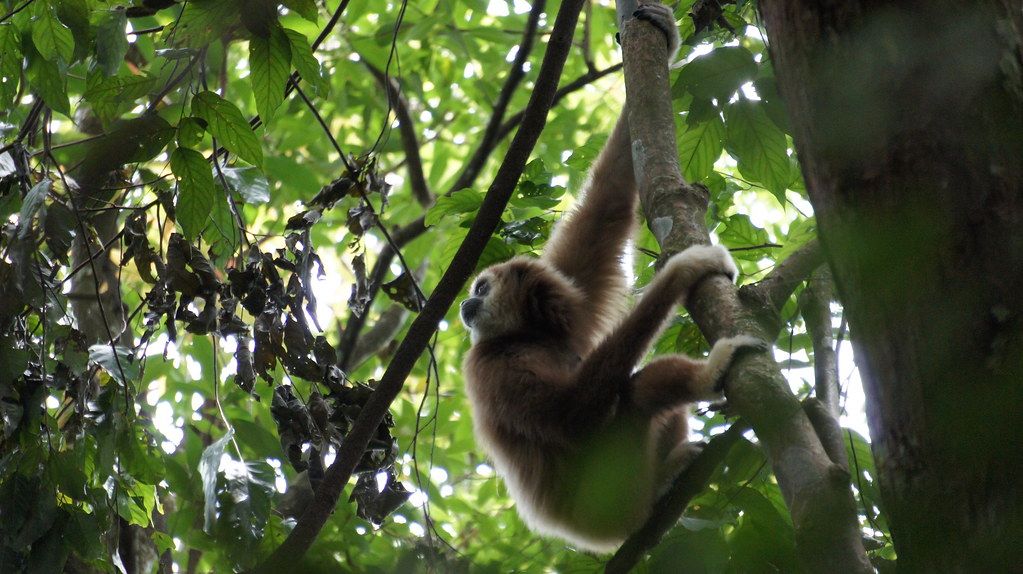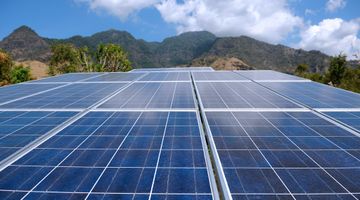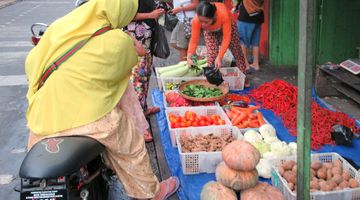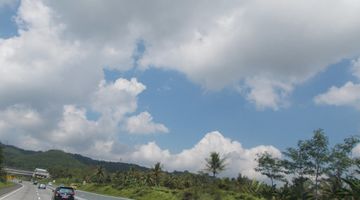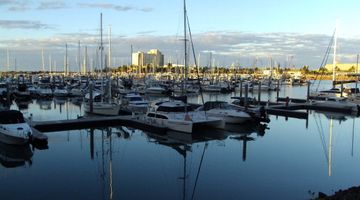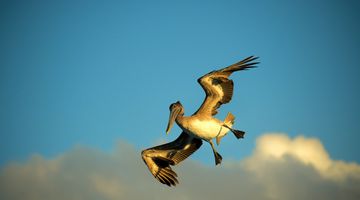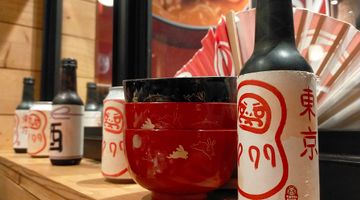Gunung Leuser National Park Indonesia – Your Quick Travel Guide
In a nutshell
Coving an area of approximately 9,000 sq km, the UNESCO-listed Gunung Leuser National Park is not only the stomping ground of an impressive and abundant range of wildlife, but is also considered to be one of the earth’s most significant and immensely bio-diverse conservation areas. Home to around 400 species of birds, elephants, reptiles, rhinos, tigers, gibbons, and of course, orang-utans, the park also comprises of a dizzying array of spectacular flowers, plants, trees, insects and spiders.
Why go to Gunung Leuser National Park
Visitors are allowed to access the park through two main gates – the more popular, Bukit Lawang; or the quieter and less well-known, Ketambe. Visitors will need to arrange a permit at a Gunung Leuser National Park prior to entering. The fee is IDR 150,000 for a foreign passport holder and IDR 50,000 for a local.
“In the jungle, the mighty jungle...” We can’t help humming this song under our breath as we write this article and this national park is undoubtedly the perfect place to visit for those who love animals, getting lost in the wild and are looking to submerge themselves in all things designed by Mother Nature herself. Trekking, trekking and some more trekking. Travellers who think that taking long hikes along lightly trodden paths with birdsong above their heads, mud squishing through the grooves in their hiking boots, and the likely event of seeing wild orang-utans before the day is over, might call Gunung Leuser, ‘A wild, tropical paradise.’ And in our pinion, they would be completely right. This national park is a nirvana for nature lovers, adventurous hikers, and those who relish in the great outdoors.
After a long, sticky trek spent getting lost; visitors can also rinse off in the nearby hot springs, go rafting along the Alas River in Ketambe, or tubing in Bukit Lawang. Bring your bug spray, decent footwear and a spirit of adventure, the treasures of Gunung Leuser await.
When to go to Gunung Leuser National Park
Although the national park receives plenty of rainfall and humidity throughout the year, the rain comes down daily during the wet season, which occurs from October to March with November and December offering the most amount of rainfall. However, for those who don’t mind getting wet, these wetter months are actually the best time of year to spot orang-utans as the trees bear the most fruit during this time.
Where to stay in Gunung Leuser National Park
Accommodation options in the lush, tropical rainforest are basic, comfortable and rustic. There is little point expecting 5-star facilities out here in the jungle and amenities are rudimentary at best. What you’ll lack in Egyptian-cotton sheets and Wi-Fi, will be more than made up for with the enchanting jungle view; the uniqueness of the experience; and the quiet, peaceful solitude that only really come with poor cellphone reception.
Travellers’ main accommodation selection will vary from setting up a tent and camping for the night, or stopping at the end of your daily trek and sleeping in a simple lodge. Both camping and lodging facilities are arranged by your hiking guide when trekking through the rainforest and are included generally in your packaged tour guide price.
Visitors do not need to worry about bringing along any linen, sleeping bags or crockery as everything down to leech socks should be organised and provided by the Gunung Leuser guides.
Some camp sites include comfy furniture and hot, sustainable meals; while others use simple hammock-tents and go for a more Spartan, non-indulgent approach. Trust us, after a day spent excitedly trudging through the rainforest your aching muscles and weary feet will be more than comfortable with whatever simple, yet cosy, accommodation facilities are provided.
Where and what to eat in Gunung Leuser National Park
With nature being the main highlight and draw for visitors, the culinary options in the national park are something of an afterthought and the options are very basic and rather limited.
Fortunately, visitors will find that all of the lodges and guest houses have attached restaurants that conveniently offer guests breakfast, lunch, dinner and light snacks in the way of food. The cuisine is mostly Indonesian fare with a couple of simple western options thrown in for good measure. The prices of food are slightly more expensive than outside of the park perhaps as a result of the transport costs involved in brining the produce and products into the national park from the outside.
The food, while rather rudimentary, is tasty, nutritious and of generous portions. Trekkers who have spent hours walking the jungle floors will find the meals to be satisfying and hearty and the furthest thing from their mind while shovelling in spoonfuls of nasi goreng, will be the lack of presentation or the mismatched crockery. Guest houses also sell plenty of snacks and refreshments that you can stock up on prior to going off on a trek and your guide will generally bring along extra water.
How to get around Gunung Leuser National Park
Considering that the rainforest is the home to an abundance of wildlife and plant life, the roads for driving are dirt, and the bumpy two-hour journey from Tangkahan from Bukit Lawang is mostly completed on motorbike. However, for travellers here during the rainy season, this route becomes not only treacherous, but impossible to travel and jeep rides are the only option. The local villages in the park are made up of little more than a scattering of guest houses, several native residences and the odd café or snack shop; and so walking is the main means of exploring the small area although there really isn’t all that much to see or do unless you’re on a tour or trek.
How to get to and from Gunung Leuser National Park
Due to the park being reached and explored only by a rigorous exercise in hard, rough travel, many travellers choose to make use of a fully organised and guided tour which usually start with an airport pick-up from Medan Kualanamu International Airport.
Medan is the gateway to Gunung Leuser National Park and it is here that travellers wanting to explore the secrets of the park need to journey to. Fortunately, this airport is serviced with direct flights from Malaysia, Thailand and Singapore and getting to the airport can be achieved relatively easily.
Upon touchdown in Medan, travellers wishing to venture directly onwards to Gunung Leuser will need to catch a non air-conditioned bus, a shared minivan arranged via a travel agent, or a pre-arranged taxi from the Pinang Baris Bus Terminal and head to one of the park’s villages.
For travellers wanting to head to the small village of Bukwit Lawang that is one of the gateways to Gunung Leuser, you can catch a bus from the same terminal at the airport on one of the large, non-air-conned buses plying this journey. The route is around 90 kilometers, takes around 4 hours and costs roughly IDR 20,000 per person. Usually the buses leave every half an hour and will drop passengers at the Bukwit Lawang Bus Terminal.
Those wishing to head to the quieter and further, Ketembe gate, will need to catch a minibus from Medan to Kutacane. This can also be done at the airport bus terminal for around IDR 70,000. The journey is a 7-hour one making it the less popular choice. However, for travellers longing to experience the true Gunung Leuser away from the maddening crowds and tourism, this is the better, although more challenging, alternative. The buses that ply this route usually take a detour to Berastagi so if you’re leaving from here, the buses are relatively easy to flag down. Hopping off is also an option for those wishing for a detour off the beaten path. Once arriving in Kutacane, you’ll need to grab a local jeep or minivan heading to Ketembe from the station near to the market. The journey shouldn’t take much longer than an hour and will cost around IDR 15,000.
Is Gunung Leuser National Park a safe place to visit?
Regarding staying safe in the national park, your biggest concern is the weather and getting lost in the jungle. It’s important to always carry more than enough water, a warm jacket and to ensure that you are trekking with a trusted and reputable guide.
In the past there have been unsavoury reports from female travellers stating that their guide has been rather suggestive and flirtatious and so its advisable to always ensure that you are hiking in a large group rather than solo.
Keep in mind that Northern Sumatra experiences heavy monsoon rains in March and April, and then again in September and October. While tours will not necessarily stop during these months, the wet weather obviously presents problems of its own. The heavy rainfall may mean that the rivers are too dangerous to go rafting, boating or tubing and hikers can expect muddy conditions and an abundance of leeches in the rainforest.

